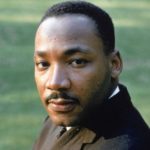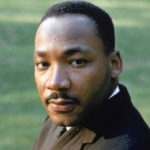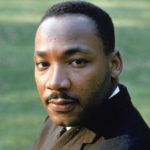EDSITEment feature highlighting resources, activities, and lesson plans to help teachers, students, parents, and caregivers understand the impact Dr. King had — and continues to have — upon our country and the global efforts towards peace and civil rights.
On the third Monday of January, Americans celebrate the life and achievement of one of our most respected citizens — Martin Luther King, Jr. Dr. King was a leading force in the drive for civil rights in the United States, and he showed through words and actions that non-violent, persistent activism can achieve tremendous results by appealing to the moral conscience of Americans.


